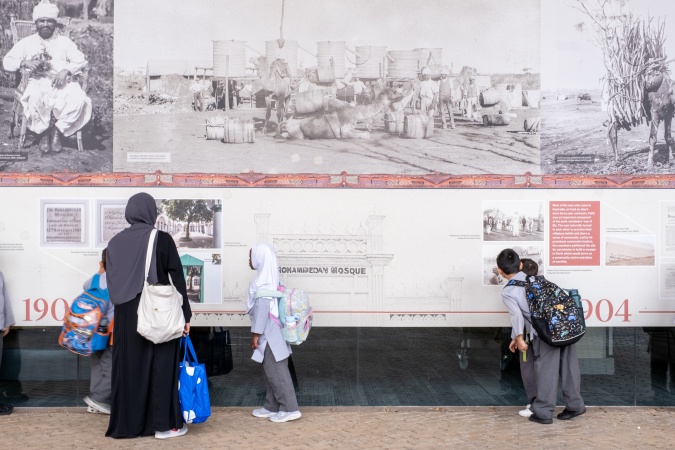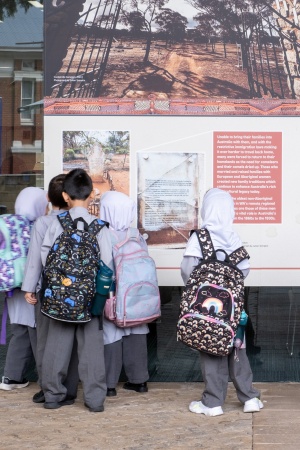
Discover the forgotten history of cameleers in Western Australia. Between 1870 and 1920, as many as 20,000 camels and 4,000 men travelled to Australia to help explore and develop the country's arid interior and helped spark the biggest gold rush in the west. Often referred to as "Afghan Cameleers", they came from incredibly diverse nationalities, including Egypt, Iran, India, Turkey, Syria, Afghanistan and what is now Pakistan. Despite their important role, they were subjected to discrimination and hostility.
To coincide with the 120th anniversary of the founding of the Perth Mosque, the State Library is unveiling a new exhibition of collection material which helps unpack the often-mistold history of camel men and their social, cultural and economic contribution to Western Australia. Perth Mosque, located at 427 William Street, was spearheaded by so-called ‘camel men’.
Delve into the origins of South Asian migration to Australia in the late nineteenth century and discover more about these adventurers who built a life and legacy against the odds.
After seeing the exhibition, continue the journey by downloading this self-guided walking trail and following in the footsteps of the cameleers of WA.
Discover more...











